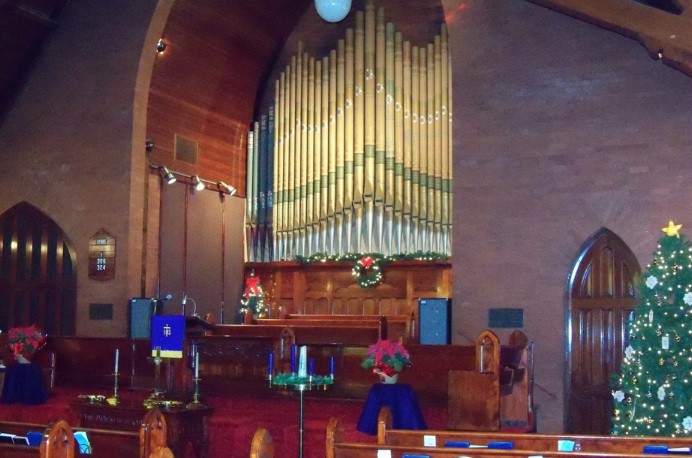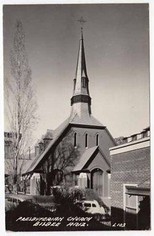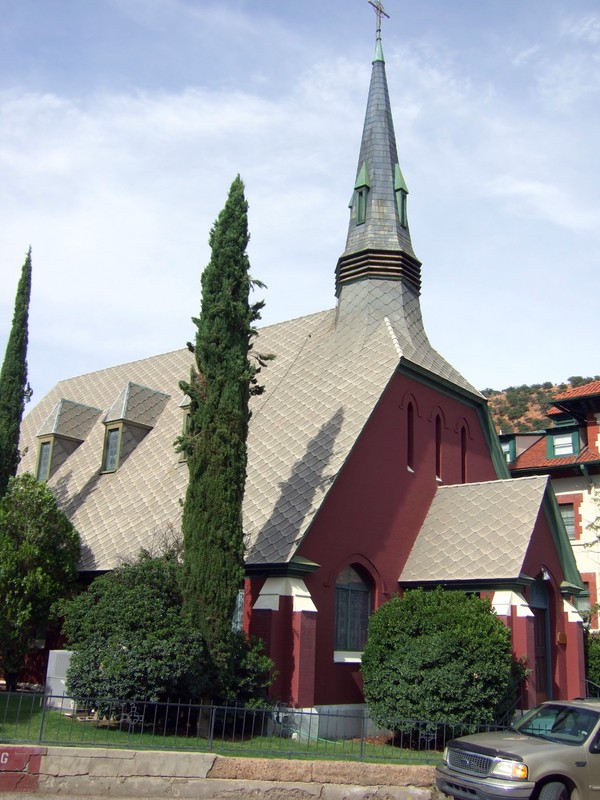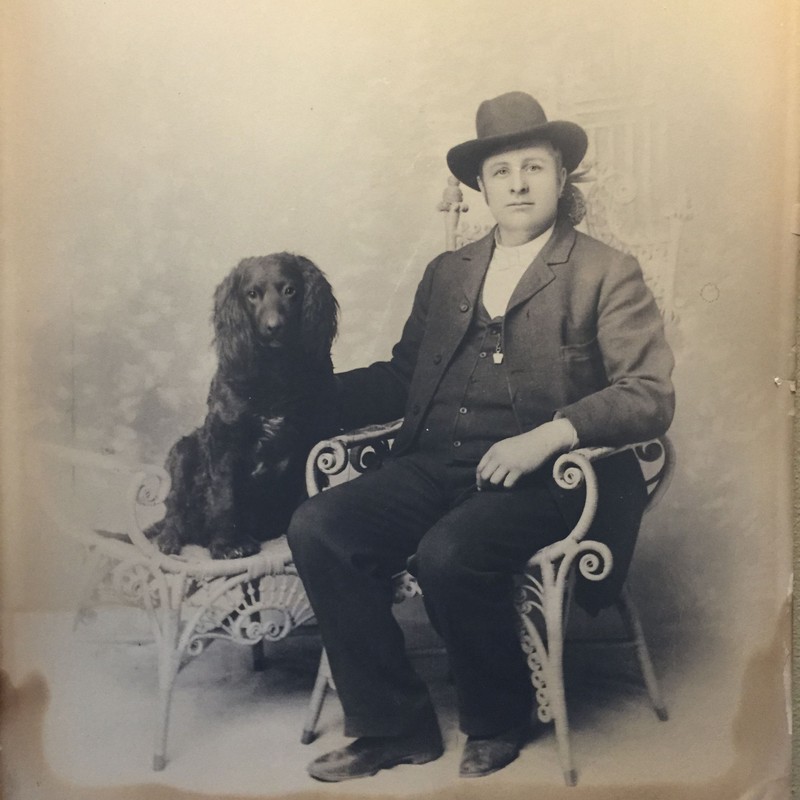Bisbee's old Presbyterian Church
Introduction
Text-to-speech Audio
Images
The church's 16 foot organ as it looks today

Mid-1900s photo of the church

The Presbyterian Church as it looks today

Reverend J.G. Pritchard with his Cocker Spaniel

Backstory and Context
Text-to-speech Audio
"Bisbee, unlike many other mining boom towns, survived due to the discovery and production of copper. People of various nationalities flocked to the area. [It is said that many who first came here] were rough and tough and seemingly lacked regard for things of culture and religion. Individuals took the law into their own hands.
However, there were some who desired those institutions which made a "camp" a home. A library was built and Rev. J. G. Pritchard, a Presbyterian minister from England, was hired as librarian. His duties included being chaplain of the copper company. In 1888, Rev. Pritchard helped organize the Union Church, out of which also grew several Protestant congregations.
A Sunday School missionary sent from New Mexico, together with Rev. Pritchard, worked with the Presbyterian contingent and on March 8, 1900, a group of 20 persons meeting in the Library Hall, met for worship and voted to organize "The Presbyterian Church of Bisbee," later to become Covenant Presbyterian Church.
Within months of formal charter of the congregation, the Session began corresponding with officials of the Copper Queen Mining Company to secure property on which to construct a church building. William Dodge and D. Willis James, staunch Presbyterians, negotiated a purchase for two lots next door to the Copper Queen Hotel for a total of $12,000. The lots became the property of the company which was then known as the Copper Queen Consolidated Mining Company. Permission was given for the church to construct a building.
Funds were sought, members contributed, and in early 1902, construction began. Mr. Dodge and Mr. James provided much of the financial resources necessary for the completion of the building, apparently as a loan. Stained glass windows were installed in March of 1903.
The pipe organ, a gift from Arthur Curtis James, son of D. Willis James, was installed that same month. It was built by the Harris Company of Los Angeles, organ builders from 1895-1913, and arrived in time to be installed for the first worship service on April 5, 1903. The instrument included three distinct organs, the Great, the Swell, and the Pedal, and consisted of two manuals with a compliment of 579 pipes constructed from Swedish Tinn (pewter) as well as wood. The pipes range in size from less than two inches in length to sixteen feet. The exposed chancel pipes are an example of the hand decorating craft of Mr. George Head, employee of the Harris Company. The organ has been maintained and enlarged to fifteen ranks of pipes through the interest and support of the congregation of Covenant Presbyterian Church.
Records show that after the death of Mr. Dodge in 1904, the executors of his estate, along with Mr. James, settled the church's indenture for one dollar "in lawful currency of the United States of America." Arizona was still a territory. The cost of construction was estimated at $10,000. The organ cost approximately $2,500. The church with its magnificent organ and spectacular stained glass windows cost little more than the land on which it is situated!
In 1917, two wings were added to the building to allow for meeting and education space. Soon after, pews, hand carved in the Netherlands, were installed. Today, the church owns the former hospital building, "The Annex"--also acquired for $1 from Phelps Dodge--where educational and fellowship events are held."
